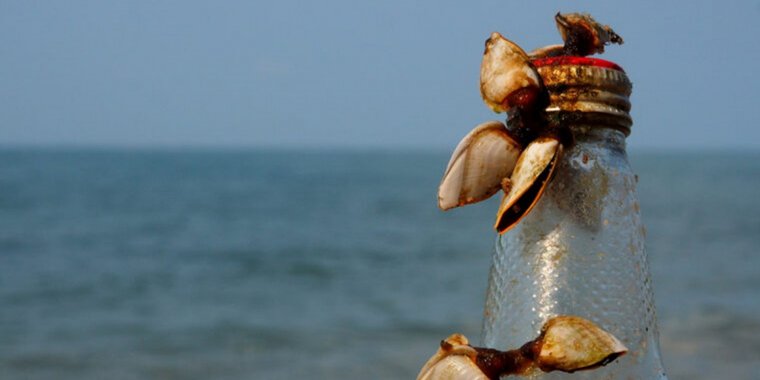| News / Science News |
New hydrogel is as strong as spider silk and sticky as mussel foot protein
Replicating the effective underwater adhesion of some marine organisms has been an elusive endeavor, until recently. Researchers at Washington University in St. Louis, funded in part by the U.S. National Science Foundation, used synthetic biology to successfully fabricate a biocompatible hydrogel that adheres to underwater surfaces, mimicking marine life. The easy-to-use material has potential for use in manufacturing to medicine and beyond.

A hydrogel that works underwater could have industrial and medical applications. Photo: Zhang lab
"We developed a design principle that allowed us to control both cohesion and adhesion of the hydrogel," said lead scientist Fuzhong Zhang. "The gel is slightly denser than water so you can easily use it underwater, putting it on or between two surfaces."
The team combined hybrid spider silk and mussel foot proteins created by engineered bacteria to fashion a tri-hybrid protein with both strong adhesion and strength, which was then used to produce the novel hydrogel.
The adhesion and strength of the hydrogel can be controlled by engineering bacteria to produce modified motifs of spider silk and mussel foot proteins, and can be biocompatible and biodegradable.
The properties of the hydrogel could also be suitable for use in tissue and tendon-bone repair and medical procedures that restore limb functionality.
"Spiders, bacteria, slimy sea creatures and rotator cuff tears have very little in common," said Young-Shin Jun, a member of the research team.
"We were able to combine the best parts of the first three and to make new elastic materials with molecular-scale crystalline structures that can serve as stronger and flexible adhesives. It would be even cooler when we can use it in medical care for repairing shoulder injuries." (National Science Foundation)
YOU MAY ALSO LIKE





